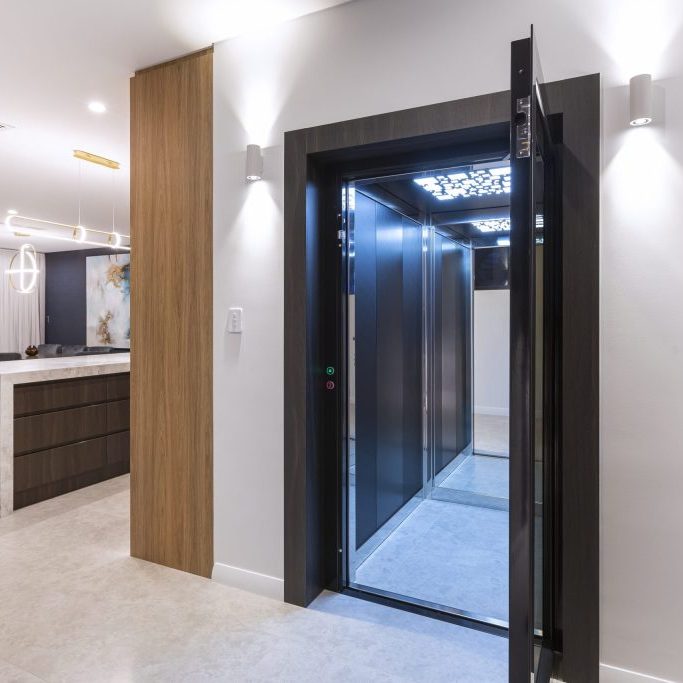Contrast Disabled Platform Lifts Prices UK: Affordable Options for every single Requirement
Contrast Disabled Platform Lifts Prices UK: Affordable Options for every single Requirement
Blog Article
Diving Into the Globe of Elevators: Typical Problems Faced by Various Lift Mechanisms
As we navigate through the vertical transportation systems of contemporary structures, elevators stand out as a vital component of our daily lives. From hydraulic lifts to traction systems and machine-room-less designs, each lift kind comes with its collection of usual issues.
Hydraulic Lifts
Hydraulic elevators, typically preferred for low-rise buildings, use fluid stress to control the movement of the elevator car (lift repair companies). This system entails a hydraulic pump pushing oil right into a cyndrical tube, causing the elevator to relocate the desired direction. While hydraulic lifts are understood for their quiet and smooth operation, they do feature their very own set of typical concerns
One common problem with hydraulic lifts is oil leakage. Additionally, issues with the control system, such as faulty valves or a malfunctioning pump, can cause disruptions in the elevator's movement.
Normal upkeep and punctual fixings are important to make certain the smooth functioning of hydraulic lifts. By addressing these usual problems proactively, structure proprietors can reduce downtime and make certain the safety and performance of their upright transportation system.
Traction Lifts
When thinking about vertical transportation systems in structures, another typical kind apart from hydraulic lifts is the traction elevator. Grip elevators operate utilizing a system of ropes and counterweights that relocate the elevator auto by clutching onto the hoist ropes. This device permits smoother and quicker upright transportation compared to hydraulic systems.
One of the common problems encountered by grip lifts is rope wear. The consistent activity of the ropes within the traction system can cause put on and tear gradually, potentially creating the elevator to breakdown or end up being dangerous for use. Normal inspections and upkeep of the ropes are necessary to make sure the elevator's appropriate functioning and security.
Another problem that traction lifts may run into is associated to the control system. Troubles with the control system can lead to concerns such as irregular motion, hold-ups in action times, or even total closures. Normal testing and upkeep of the control system are essential to stop such problems and ensure the lift's dependability.
Machine-Room-Less (MRL) Elevators

One of the vital elements of MRL elevators is the compact gearless traction device that is installed within the hoistway. This device efficiently drives the lift automobile without the requirement for cumbersome devices located in traditional grip lifts. In addition, MRL elevators commonly use a weight system to balance the car, further boosting their power efficiency.
In spite of their benefits, MRL elevators might face challenges connected to maintenance and repair as a result of the constrained room for tools setup. Ease of access for servicing elements within the shaft can be restricted, needing specialized training for professionals. Correct maintenance timetables and regular assessments are crucial to ensure the continued smooth procedure of MRL elevators.
Overloading and Weight Limitation Issues
Are elevators outfitted to handle excess weight lots efficiently and safely? Straining and weight restriction concerns are vital issues in elevator procedures. Elevator manufacturers design raises with certain weight capabilities to make certain traveler safety and devices long life. Going beyond these weight limits can cause different issues, consisting of click mechanical failures, delays, and safety and security dangers.
When elevators are overwhelmed, it puts too much pressure on the electric motor, cable televisions, and various other components, possibly triggering malfunctions or breakdowns. Security devices such as sensors and overload sensing units are in area to avoid elevators from moving if they detect excess weight. Additionally, exceeding weight limits can result in enhanced energy usage and deterioration on the elevator system.
To alleviate overloading concerns, developing supervisors should plainly present weight limits in elevators and inform occupants on the importance of adhering to these limitations - lift repair companies. Normal maintenance checks by qualified service technicians can also help guarantee that elevators are operating within secure weight specifications. By addressing overloading and weight limit concerns proactively, structure owners can improve elevator security and efficiency
Electric System Failings
Surpassing weight restrictions in elevators can not only lead to mechanical concerns yet also possibly add to electric system failings why not look here within the lift facilities. Electrical system failures are a critical issue in elevator operation, as they can create unexpected closures, malfunctions, or even safety threats. One typical electric concern is the getting too hot of elements due to extreme existing circulation brought on by overloading the lift past its capability. This can bring about damage to the control, circuitry, or electric motor systems, leading to expensive repair work and downtime.
Additionally, power surges or variations in the electrical supply can additionally interrupt the elevator's operation, affecting its performance and safety. These electrical disturbances can damage delicate lift components such as control panels, circuit boards, or sensors, bring about system failures. Normal maintenance and assessments are important to recognize and deal with possible electrical problems promptly, making certain the efficient and secure operation of lift systems. By sticking to weight limits and performing regular electric system checks, building owners can reduce the risk of electric failures in lifts.
Final Thought

Hydraulic lifts, typically chosen for low-rise structures, utilize fluid stress to manage the movement of the elevator vehicle.When taking into consideration upright transportation systems in structures, an additional typical kind apart from hydraulic lifts is the grip lift. Traction elevators run using a system of ropes and weights that relocate the elevator vehicle by clutching onto the hoist ropes. Unlike typical lifts that need a separate machine area to house the tools, MRL elevators integrate most of the components within the shaft, eliminating the demand for a devoted machine space.In verdict, lifts deal with common issues such as hydraulic malfunctions, traction system failures, and electric system problems.
Report this page